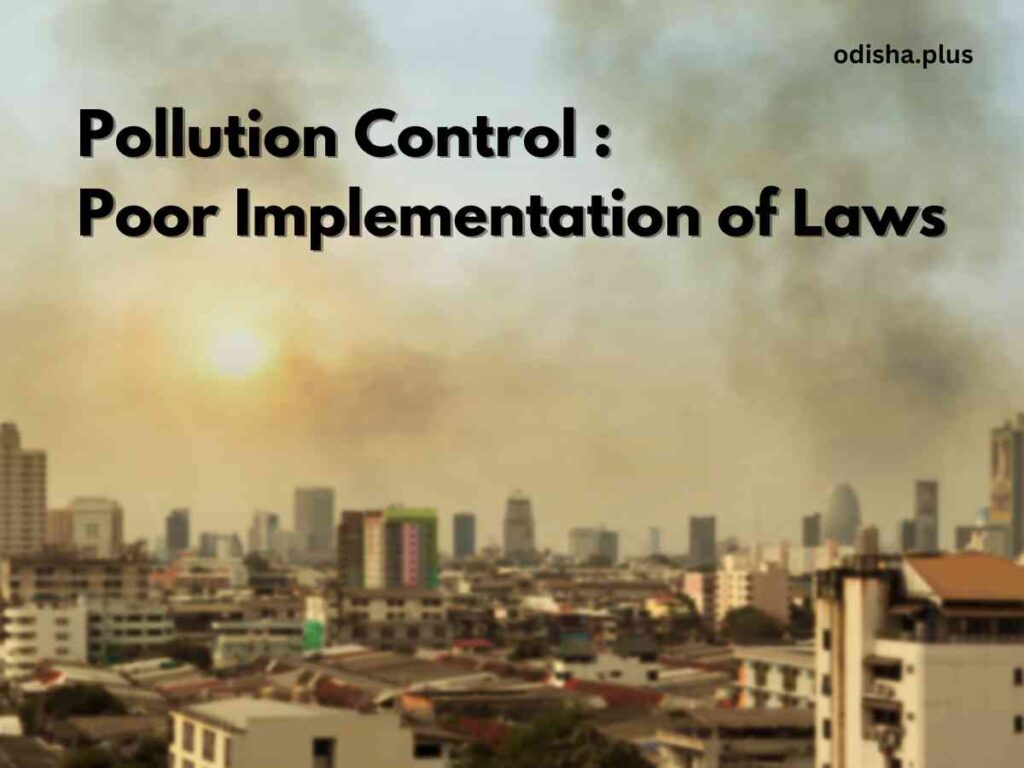Effective monitoring and implementation has been the Achilles heel in the battle against pollution
Bhaskar Parichha

Several studies have documented the health and economic effects of pollution in India in the past five years. These have underlined that bad air, poor quality water and tardy waste management are problems not just of big cities, and they undermine the quality of life of people in Tier 2 and 3 cities as well. The problem does not stem from a lack of laws.
Effective monitoring and implementation has been the Achilles heel in the battle against pollution. The problem, as an affidavit submitted by the Central Pollution Control Board (CPCB) to the National Green Tribunal acknowledged, is that regulatory bodies have been chronically understaffed. Nearly half of all posts in State Pollution Control Boards (SPCB) are vacant, some for decades.
Vacant Posts
Nearly 54% of the sanctioned posts in the National Capital Region, whose problems with bad air begin with the onset of the festive season in October and continue well into winter, are vacant. SPCBs were set up in 1974 under the Water (Prevention and Control of Pollution) Act. Over time, their mandate has extended to tackling air and noise pollution and managing hazardous waste.
However, environmental regulation has rarely kept pace with the demands of the post-liberalization economy. The SPCBs haven’t just failed to fill up their sanctioned strength. They have also not done justice to their mandate by failing to rope in an adequate number of independent scientists in pollution control exercises. The autonomy of these agencies on technical issues is often compromised because civil servants and officials with a background in government and not experts hold most of the top posts.
Moreover, the terms of these agencies’ chairperson and member secretaries vary from a year to three years — only in rare cases have these officials held a position for more than five years. Such short tenures are not ideal for developing long-term pollution abatement plans.
Regulatory Efficiency
The persistent environmental issues we face today have been a concern for many years, yet there has been a notable lack of comprehensive efforts to delve into and understand their root causes. This oversight has hindered the development of effective solutions. Over the past five years, the Central government has launched several significant projects aimed at improving air quality, waste management and water quality.
These initiatives reflect recognition of the urgent need to address environmental degradation. However, despite these efforts, both the Central and state governments have not prioritized the enhancement of regulatory efficiency, which is crucial for the successful implementation and sustainability of these projects.
Regulatory efficiency encompasses the ability of governmental bodies to enforce environmental laws and regulations effectively, ensuring that the measures put in place are not only well-designed but also actively monitored and enforced. Without a robust regulatory framework, even the most well-intentioned projects may fall short of their goals, leading to continued environmental harm and public health risks.
One promising avenue to improve regulatory efficiency could involve tapping into the wealth of expertise available within the nation’s universities and technical institutions. These academic entities are often at the forefront of research and innovation in environmental science and policy. By collaborating with these institutions, governments could leverage cutting-edge research, data analysis and technological advancements to inform and enhance environmental regulations. This partnership could lead to the development of more effective monitoring systems, better compliance strategies and innovative solutions tailored to the specific environmental challenges faced by different regions.
Collaborative Effort
Furthermore, fostering such collaborations could also contribute to greater financial and institutional independence for pollution control agencies. By integrating academic research and expertise into the regulatory process, these agencies could become more self-sufficient, relying less on external funding and more on their capabilities to address environmental issues. This independence would empower them to act decisively and responsively in the face of emerging environmental challenges, ultimately leading to more sustainable and effective pollution control measures.
In conclusion, while significant strides have been made in addressing environmental issues through various projects, a more holistic approach that includes a focus on regulatory efficiency and collaboration with academic institutions is essential. By doing so, we can create a more resilient framework for environmental governance that not only addresses current challenges but also anticipates and mitigates future risks.
(The author is a senior journalist and columnist. Views expressed are personal.)






















